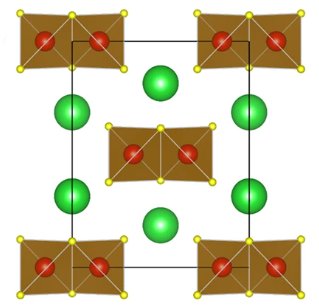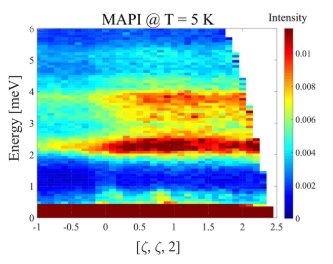V. Balédent, A. Vaunat, S. Petit, L. Nataf, S. Chattopadhyay, S. Raymond, and P. Foury-Leylekian
In this paper, we investigate the physical properties of the type-II multiferroic GdMn2O5 material by means of neutron scattering, electric polarization, and magnetization measurements. A complex (T,H) phase diagram shows up, with especially a field-induced magnetic transition around 11 T at low temperature. The high-field phase is accompanied by an additional electric polarization along both the a and b directions, as authorized by symmetry, but never observed experimentally up to now. While the magnetic properties recover their initial states after driving the field back to zero, the polarization along a shows a significant increase. This behavior is observed for all directions of the magnetic field. It constitutes a novel and striking manifestation of the magnetoelectric coupling, resulting in the establishment of a new ground state at zero magnetic field.
Wen-Gen Zheng, Victor Balédent, Claire V. Colin, Françoise Damay, Jean-Pascal Rueff, Anne Forget, Dorothée Colson and Pascale Foury-Leylekian
It has been recently observed that a superconducting phase emerges under pressure in the Fe-based spin-ladders BaFe2X3 (X = S, Se). The low dimensionality of the Fe spin-ladders, which simplifies the elaboration of theoretical models, should help to understand the mechanism of superconductivity. We investigate here the frontier between magnetic and superconducting (SC) phases in BaFe2Se3 by performing challenging powder neutron diffraction (PND) and Fe Kβ x-ray emission spectroscopy (XES) under high pressure. We show that the ambient pressure ground state with a block-like magnetic order is destabilized under pressure. A pressure-induced antiferromagnetic stripe-like spin order, similar to the magnetic order of the parent superconductor BaFe2S3, is observed above 3-4 GPa. Our discovery shows that the stripe magnetic order is a key phase close to the SC dome and its particular magnetic fluctuations could be involved in the stabilization of superconductivity in Fe-based spin ladders.
https://doi.org/10.1038/s42005-022-00955-7
A. C. Ferreira, S. Paofai, A. Létoublon, J. Ollivier, S. Raymond, B. Hehlen, B. Rufflé, S. Cordier, C. Katan, J. Even & P. Bourges
Hybrid organolead perovskites (HOP) have started to establish themselves in the field of photovoltaics, mainly due to their great optoelectronic properties and steadily improving solar cell efficiency. Study of the lattice dynamics is key in understanding the electron-phonon interactions at play, responsible for such properties. Here, we investigate, via neutron and Raman spectroscopies, the optical phonon spectrum of four different HOP single crystals: MAPbBr3, FAPbBr3, MAPbI3, and α-FAPbI3. Low temperature spectra reveal weakly dispersive optical phonons, at energies as low as 2-5 meV, which seem to be the origin of the limit of the charge carriers mobilities in these materials. The temperature dependence of our neutron spectra shows as well a significant anharmonic behaviour, resulting in optical phonon overdamping at temperatures as low as 80 K, questionning the validity of the quasi-particle picture for the low energy optical modes at room temperature where the solar cells operate.









 Materials for new energy technologies
Materials for new energy technologies


